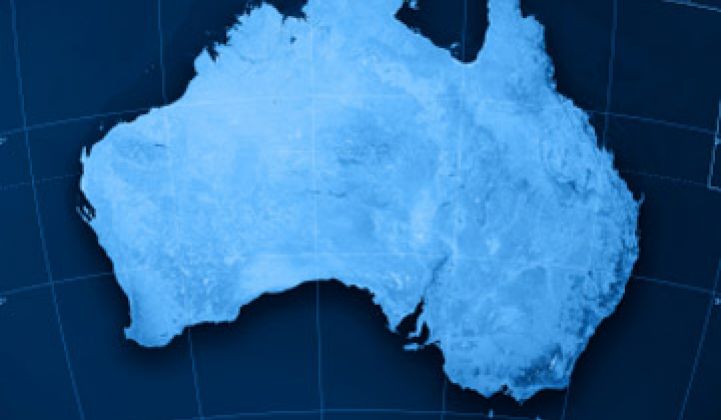Australia is best known for its sun and sand, and a U.S. trade delegation headed there for a tour is certainly interested in the former. The Australian Trade Commission is assembling a series of delegations to show American researchers, regulators and investors what the world’s largest island and smallest continent has to offer in terms of green technology.
The current trip will focus on far more than the country’s solar capacity, as various renewable energy sources area an area of great interest to the group traveling there the first week of October, including the MIT Energy Initiative, Lockheed Martin, Hudson Clean Energy Partners, Policy Capital Advisors, Davidson Energy Group, Blackstone Cleantech Ventures and CalCEF Angel Fund. The Department of Energy and other government agencies were also invited, but had scheduling conflicts, according to Paul Adler at the Australian Trade Commission.
For all of the firms involved, many have either already traveled to Australia or have had it on their radar, said Adler. The program will allow delegates to sit down at roundtables at major research universities in Brisbane, Sydney and Melbourne, as well as to look at some of the projects already underway.
With only a handful of states and about 22.5 million people, Australia has the population size and regulatory conditions that could allow for a faster scale-up of clean energy initiatives than has been seen in the U.S.
With a country already plagued by drought and sensitive to climate change, there is a movement afoot to overhaul the energy economy that the population can (and does) rally behind, unlike in the U.S., which suffers from a relatively high degree of apathy when it comes to clean energy.
“One of the great things about Australia,” said Kelly Sims, Senior Investment Director, Australian Trade Commission, is that “we’re a Disneyland for renewables. We have a lot of resources.”
Those resources include solar, geothermal, wind and biomass. Although there is potential, currently only about five percent of energy down under comes from renewables, and most of that is hydro. But with a goal of 20 percent by 2020, clean energy must mature fast in Australia.
The government is planning a $1.5 billion Solar Flagships Program that will test a photovoltaic and solar thermal project that will each produce about 200 megawatts. Wind production was just under 2,000 megawatts at the end of 2009, according to the World Wind Energy Report. Australia and Oceania represent 1.5 percent of the total global capacity for wind energy, which is far higher than its representation in terms of population.
EnergyAustralia recently won a $100 million “Smart Grid, Smart City” government project that will include everything from substation automation and charging stations for electric vehicles to home area networks and time-of-use pricing. The project will also look at opportunities to use broadband for smart grid projects as part of the country's planned National Broadband Network, which will bring fiber optic cable to 90 percent of homes in Australia.
Although water is a secondary interest to the delegation, the country has many lessons to offer the U.S. and other regions in water management and pricing schemes as available fresh water shrinks and populations grow.
Global positioning doesn’t hurt either as a way to get people’s interest. “Many view Australia as a stepping stone into the big pie, which is China,” said Adler. “Australia is a fantastic incubator.”



